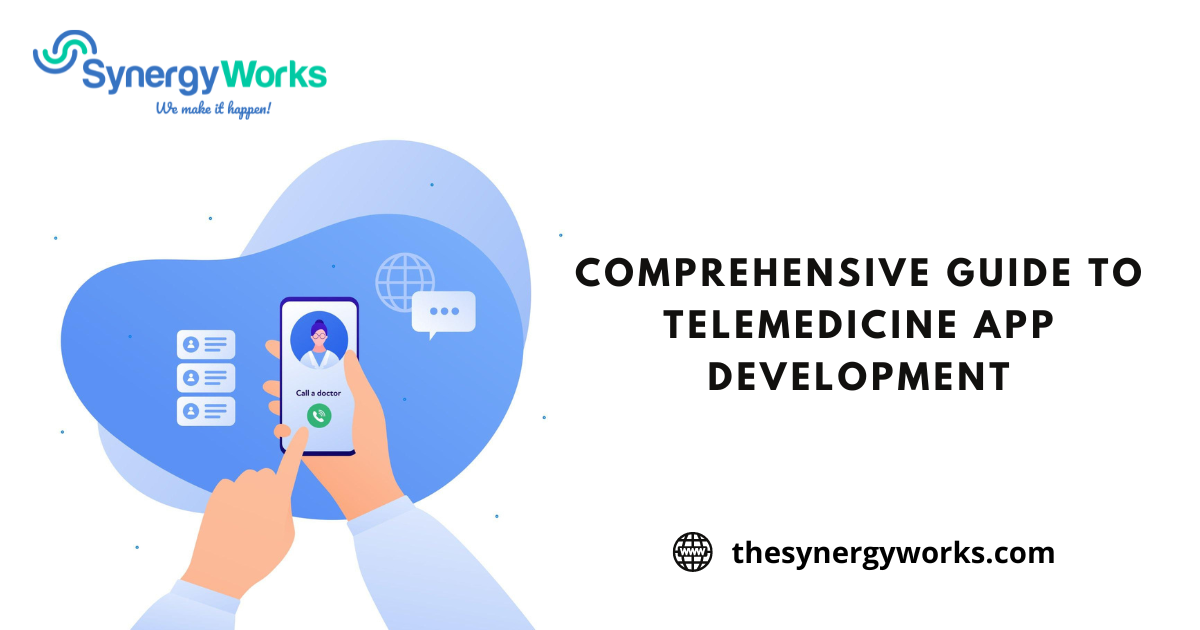Healthcare is undergoing a revolution today, and telemedicine is poised to flourish. Now’s the time to get telemedicine app development services. Due to the Covid-19 pandemic, the market for digital medical services has rapidly expanded.
Over the next decade, the telemedicine market will grow by 25.5% and surpass $396 Million in revenue by 2027.
In a changing world, healthcare organizations embrace telemedicine and develop telehealth apps in droves.
Adding a telemedicine app could be a big step forward for the medical industry and a revolution for doctors. Telemedicine makes healthcare delivery easier while also making doctors’ visits more convenient.
Let’s build a telemedicine app together.
Types of Telemedicine
There are a number of telemedicine app developments available. But the three most common types of telemedicine software are highly recommended by most of them as follows.
Interactive telemedicine app
A phone or video call between the patient and the doctor is possible with this type of telemedicine app. The main benefit of this app is contacting a specialist who is available in your area.
IoT telemedicine software
The Internet of Things is an interconnected network of smart devices that exchanges and collects data, and telehealth applications use them to monitor patients remotely. The clinical parameters measured by smart devices are heart rate, blood pressure, body sugar level, and other health-related parameters.
Store-and-forward.
Store and forward is another type of telemedicine software. This software allows medical care providers to review patient data, like medical history, lab test results, reports, images, scans, transcripts, etc.
Read More: White Labeled Telemedicine Platform
How to Create a Telemedicine App: Step-By-Step Process
With telemedicine apps, patients can access medical care anywhere, anytime, and in any way they choose. This has had a profound impact on how people manage and obtain health services around the world.
The development process required to build a Telemedicine app is essential for ensuring a successful development process.
Here’s a step-by-step guide on How to Develop a Telemedicine App
Step 1: An engineering approach to requirements
Defining your requirements is the first step toward Telehealth app development. This phase includes researching the market, and competitors, identifying a target audience and executing ideas.
After conducting research, create a scope of work document with a product backlog and describe how patients & doctors will benefit from your telemedicine app.
Step 2: Decide the list of features you want in the app
As the next step in Telehealth app development, you need to build an app with all the features to bring doctors and patients to each other and provide them with an all-in-one solution for their healthcare needs.
Step 3: Begin the Development Process
Having listed the features, you wish to include, it’s time to commence development. It starts with wireframes & mockups, then UX design and backend development.
Step 4: Perform a Thorough Testing
To ensure all features of your telemedicine app are working correctly, testing it thoroughly during the last milestone is recommended.
Additionally, you need to ensure that patients and doctors can seamlessly access your telemedicine app from different devices.
Step 5: Take a demo and deploy
You are responsible for ensuring that your app development company deploys the app by Google Play Store and Apple App Store guidelines. Demonstrating your app is the next step to ensure it works flawlessly and that you are happy with its overall performance.
Step 6: Launch
Lastly, the testing process of the telemedicine app will begin to ensure its quality. You should ask patients and doctors for feedback once the app is available in app stores and make any necessary improvements.
Features of telemedicine app
There are three distinct parts to a traditional telemedicine app development solution – a doctor’s app, a patient’s app, and an admin panel. Ensure your telehealth app incorporates these top telemedicine app features.
Features for the Patient’s Panel
- Join now
- Profile access
- Choose a doctor from the list
- Schedule an appointment
Features for the Doctor’s Panel
- Create an account
- Sign up for a profile
- Appointment approval
- Chat via video and audio
Features for Admin’s Panel
- Managing doctors
- Managing patients
- Managing appointments to reduce doctors’ overload and increase patients’ convenience
Benefits of telemedicine
Telemedicine brings multiple benefits for both patients and doctors.
Benefits of telemedicine for patients
Getting medical care through telemedicine solves many problems that patients often encounter:
Providing quality medical care at a lower cost
Getting professional medical assistance from experts in some fields can be challenging for patients in rural and remote areas. A personal visit is usually arranged with a medical expert in a place where they work. It is true that such consultations take lots of extra time and are expensive in terms of travel and lodging.
By taking advantage of telemedicine app, patients can receive medical advice and even undergo examinations without leaving their homes.
Convenience is increased
A trip to the doctor’s office or clinic almost always involves waiting in a long line, and such a trip may be extremely uncomfortable for someone who isn’t feeling well. As well as that, paperwork is a time-consuming task.
Remote visits offer patients a more convenient experience than physical visits. It is possible to complete all documentation online as well.
Faster recovery
Everyone heard that free consultation slots for doctors were just weeks away. There may be a period when the patient’s condition deteriorates, and a stronger, longer treatment is needed.
An online consultation allows the doctor to see the patient faster and detect the illness at its earliest stages when it is still mild.
Benefits of telemedicine for doctors
Using telemedicine isn’t just beneficial to patients. Additionally, it simplifies many aspects of doctors’ lives.
Improved patient service effectiveness
A doctor’s visit also takes time. Instead of traveling, they can focus on patient care when there is no need to travel. Additionally, they can provide quality medical care to patients in remote areas with the help of telemedicine.
Better documentation management
Most of the time doctors spend with their patients is on paperwork. A telemedicine system connecting to an electronic health record can optimize documentation by automatically uploading and storing all files, images, transcripts, and prescriptions.
Diagnosis and treatment with greater precision.
A feature of telehealth software is its ability to store all of a patient’s health records at once, including tests, scans, opinions of other doctors, previous diagnoses, chronic conditions, allergies, and intolerances, which can all be displayed at the same time.
Telemedicine Apps are here to stay
As the largest industry in the world, healthcare is already worth trillions of dollars and is growing faster than ever before.
By the end of this decade, the global telemedicine market is expected to grow by 17.1% each year, exceeding $48.8 billion in 2023.
As a result, it is evident that telemedicine apps are here to stay in the healthcare industry.
Conclusion
The development of telemedicine apps is challenging. Although telemedicine apps have the potential to provide your business with a competitive edge, it is not for everyone.
Our company, SynergyWorks, is a telemedicine app development company. We have been assisting businesses looking for telemedicine app development solutions for many years.
Our all-encompassing telemedicine app development services will ensure that your digital product is always one step ahead. It will surprise your users with its new functions and features all the time.






